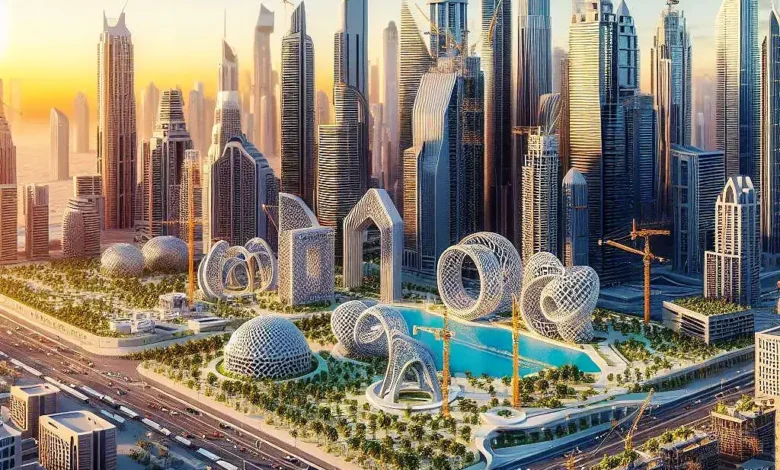
Building a Sustainable Future: The Impact of 3D Printing on Construction in the UAE
What is 3D Printing in Construction?
3D printing in construction, also known as additive manufacturing, is the process of creating three-dimensional objects by layering materials on top of each other. This technology has been gaining popularity in recent years for its potential to revolutionize traditional construction methods and create sustainable and efficient structures. 3D printing in construction involves using specialized printers that can read digital designs and then print the desired structure layer by layer. The materials used in 3D printing for construction vary but commonly include concrete, plastic, metal, or a combination of these materials.
Benefits of 3D Printing in Construction
One of the main benefits of 3D printing in construction is its ability to increase efficiency and productivity. Traditional construction methods often require a significant amount of time and labor, whereas 3D printing can significantly reduce both. With precise layering and minimal waste, 3D printing allows for faster completion times without sacrificing quality.
Another advantage of using 3D printing in construction is the potential for reduced costs. By eliminating the need for multiple materials, transportation costs, and manual labor, this technology has the potential to significantly lower overall construction expenses. This makes it an attractive option for projects with tight budgets or those looking to save on long-term maintenance costs.
Sustainability has become a crucial factor in modern-day construction practices due to growing environmental concerns. Unlike traditional building methods that generate excess material waste, 3D printing uses only the necessary materials required for each specific project. Additionally, some printers use recycled materials such as plastic or reclaimed concrete which further reduces their impact on the environment.
The flexibility and customization options offered by 3D printing also make it an appealing choice for architects and designers. These printers can produce intricate designs that would be challenging or impossible to create using traditional techniques. This opens up new possibilities in terms of design aesthetics while still maintaining structural integrity.
Lastly, one of the most significant advantages of utilizing 3D printing in construction is its ability to speed up timelines. With traditional methods requiring months or even years to complete complex structures, this technology can reduce that timeline down to days or weeks depending on the size and complexity of the project.
There are numerous benefits associated with using 3D printing in construction including increased efficiency and productivity, reduced costs, sustainability measures taken into account during production process designing flexibility allowing customization according needs client’s budget , and faster completion timescales compared with traditional methods . As this technology continues evolving rapidly, it holds great promise revolutionizing how we build our homes cities and infrastructure in the future.
Successful Implementation of 3D Printing in Construction in the UAE
Current projects utilizing 3D printing in the UAE are already showing great success and potential for this technology. One notable project is the construction of a fully functional 3D printed office building in Dubai, completed in just 17 days. This structure was constructed using a large-scale 3D printer measuring 20 feet high, 120 feet long, and 40 feet wide. It showcases the capabilities of this technology to create complex structures quickly and efficiently.
Another project that highlights the benefits of using 3D printing in construction is the creation of affordable housing units for low-income families in Sharjah. These homes were built using a specialized concrete mixture that can be easily printed by an on-site mobile printer. This method reduces both material waste and labor costs, making it an ideal solution for providing affordable housing.
Partnerships between construction companies and 3D printing technology providers have also been crucial in driving the successful implementation of this technology in the UAE. For example, one partnership between Dubai-based construction company Cazza and US-based Apis Cor resulted in successfully constructing a two-story villa using only additive manufacturing techniques. These partnerships allow for collaboration between industry experts to develop innovative solutions tailored to specific projects.
However, as with any new technology, there are regulatory and legal implications that need to be considered when implementing 3D printing in construction. Currently, there are no specific regulations governing its use; therefore it falls under existing laws related to traditional construction methods such as building codes and safety standards. As more projects begin utilizing this technology on a larger scale, it will become increasingly important for governments to establish guidelines for its safe and proper use.
While there may still be some challenges surrounding its adoption into mainstream construction practices, the successful implementation of 3D printing has already shown immense potential for revolutionizing how we build our cities across various industries including architecture , engineering , infrastructure development . With further advancements being made in this technology, the future of construction looks to be more efficient and sustainable thanks to the use of 3D printing in construction.
Challenges and Future Outlook
While 3D printing in construction holds great promise, there are still some challenges that need to be addressed before it can become a widespread practice. One major challenge is the high initial cost of purchasing and setting up specialized 3D printers. This can be a barrier for smaller construction companies or those with limited budgets, making it difficult for them to adopt this technology.
Another challenge is the lack of skilled workers trained in using 3D printers for construction. As this technology is relatively new, there is currently a shortage of professionals with expertise in operating and maintaining these machines. Training programs and education initiatives will be crucial in addressing this issue and ensuring that there are enough skilled workers available to meet the demand.
Regulatory challenges also exist as governments work to keep up with the rapid advancements in 3D printing technology. Currently, there may be gaps or discrepancies between existing regulations and standards related to traditional construction methods and how they apply to additive manufacturing techniques. Clear guidelines will need to be established to ensure safety measures are met while using this technology.
Despite these challenges, the future outlook for 3D printing in construction looks promising due to ongoing developments and advancements being made by researchers and industry experts around the world. In the UAE specifically, government support has been instrumental in driving innovation within the construction industry through partnerships between universities, research centers, and private companies.
One potential future development could involve incorporating robotics into 3D printing processes which would further increase efficiency levels by automating certain tasks such as material distribution or layering processes. Another area of focus could be developing more sustainable materials specifically designed for use with 3D printers that are both environmentally friendly and cost-effective.
There is also potential for further customization options offered by using multiple materials simultaneously within one structure – allowing designers even greater freedom when creating complex designs . Additionally , as more data becomes available about various building materials’ properties , computer algorithms could assist architects engineers design structures optimally suited to their specific environment and needs.
The potential impact of 3D printing technology on the future of construction in the UAE is immense. With its ability to increase efficiency, reduce costs, and provide sustainable solutions, it has the potential to transform how we build our cities. As more projects are successfully completed using this technology, it is likely that we will see a shift towards incorporating 3D printing into mainstream construction practices.
One area where this technology could have a significant impact is in addressing housing shortages. In many countries, including the UAE, there is a growing need for affordable housing options. The use of 3D printing in constructing homes can significantly reduce building costs and timeframes while also providing customizable designs tailored to individual needs and preferences.
As sustainability becomes an increasingly important consideration in all industries, 3D printing offers a solution for reducing waste and utilizing eco-friendly materials. By using recycled materials or developing new sustainable materials specifically designed for 3D printers, construction companies can greatly reduce their environmental footprint.
In terms of recommendations for companies considering adopting 3D printing in their construction projects , it would be beneficial first to conduct thorough research and due diligence before investing in this technology . Companies should assess their current processes and determine if integrating additive manufacturing techniques would bring added value to their operations .
Additionally , companies should consider partnering with established experts or seeking guidance from universities or research centers that have experience with implementing 3D printing into construction practices . This collaboration can help ensure successful project outcomes while mitigating any potential risks associated with adopting new technologies .
Finally , government support will continue playing an essential role in driving innovation within the industry through incentives such as funding initiatives or tax breaks promoting investment into advanced technologies like 3dprinting . Governments may also consider establishing specific regulations governing its use to ensure safety measures are met while still allowing room for growth within the sector.
The benefits offered by utilizing three-dimensional (three-D ) printing technology present exciting opportunities for the construction industry in the UAE and beyond. With its ability to increase efficiency






